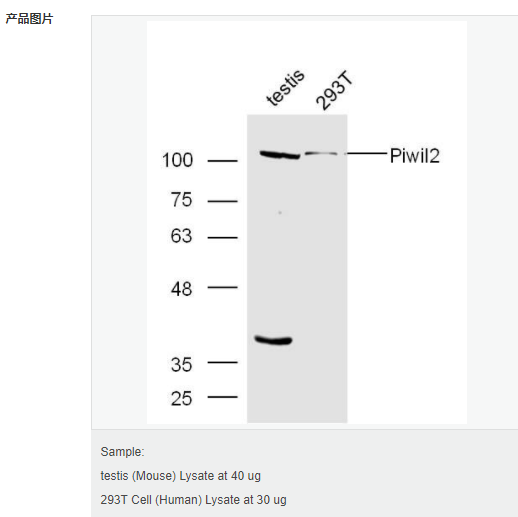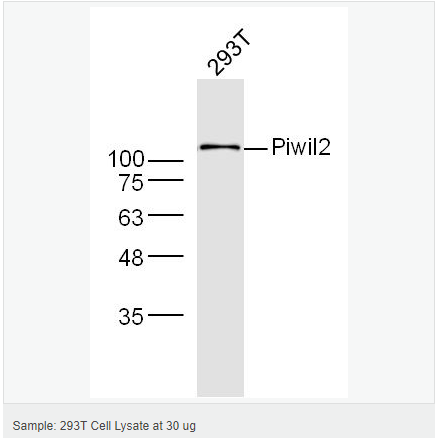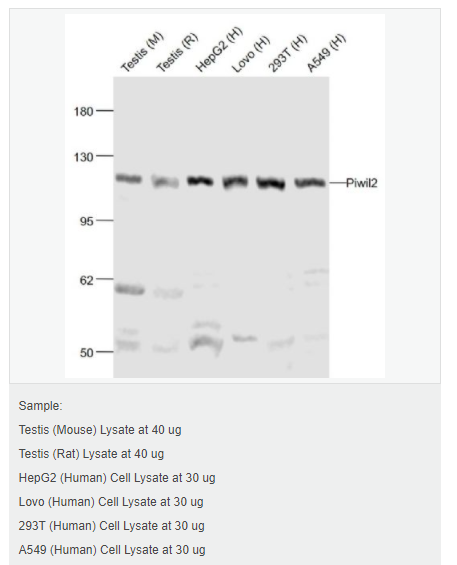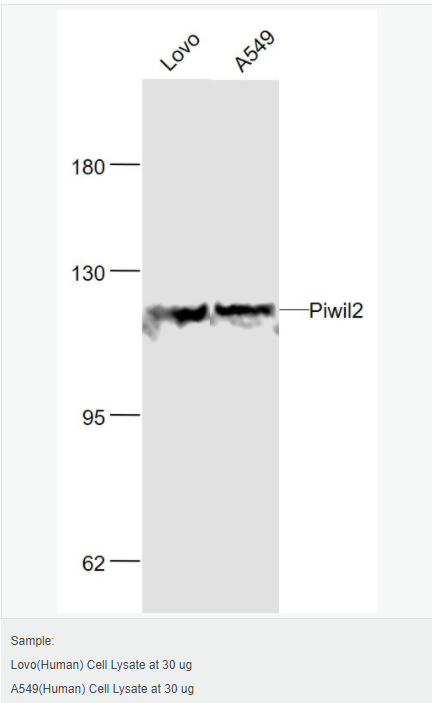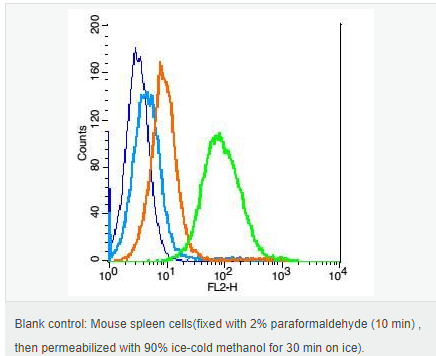

貨號
產(chǎn)品規(guī)格
售價
備注
BN40970R-100ul
100ul
¥2360.00
交叉反應(yīng):Human,Mouse,Rat(predicted:Dog,Pig,Cow,Rabbit,GuineaPig) 推薦應(yīng)用:WB,IHC-P,IHC-F,IF,Flow-Cyt,ELISA
BN40970R-200ul
200ul
¥3490.00
交叉反應(yīng):Human,Mouse,Rat(predicted:Dog,Pig,Cow,Rabbit,GuineaPig) 推薦應(yīng)用:WB,IHC-P,IHC-F,IF,Flow-Cyt,ELISA
產(chǎn)品描述
| 英文名稱 | Piwil2 |
| 中文名稱 | piwi樣2蛋白抗體 |
| 別 名 | HILI; Hiwi like; MILI; Miwi like; Piwi like 2; Piwi-like 2; Piwil 2; Piwil-2; Piwil2; Cancer/testis antigen 80; CT80; PIWL2_HUMAN; HILI. |
| 研究領(lǐng)域 | 腫瘤 細(xì)胞生物 免疫學(xué) 信號轉(zhuǎn)導(dǎo) 轉(zhuǎn)錄調(diào)節(jié)因子 |
| 抗體來源 | Rabbit |
| 克隆類型 | Polyclonal |
| 交叉反應(yīng) | Human, Mouse, Rat, (predicted: Dog, Pig, Cow, Rabbit, Guinea Pig, ) |
| 產(chǎn)品應(yīng)用 | WB=1:500-2000 ELISA=1:5000-10000 IHC-P=1:100-500 IHC-F=1:100-500 Flow-Cyt=0.2μg /Test IF=1:100-500 (石蠟切片需做抗原修復(fù)) not yet tested in other applications. optimal dilutions/concentrations should be determined by the end user. |
| 分 子 量 | 107kDa |
| 細(xì)胞定位 | 細(xì)胞漿 |
| 性 狀 | Liquid |
| 濃 度 | 1mg/ml |
| 免 疫 原 | KLH conjugated synthetic peptide derived from human Piwil2/Mili:885-973/973 |
| 亞 型 | IgG |
| 純化方法 | affinity purified by Protein A |
| 儲 存 液 | 0.01M TBS(pH7.4) with 1% BSA, 0.03% Proclin300 and 50% Glycerol. |
| 保存條件 | Shipped at 4℃. Store at -20 °C for one year. Avoid repeated freeze/thaw cycles. |
| PubMed | PubMed |
| 產(chǎn)品介紹 | HILI is a 973 amino acid protein encoded by the human gene PIWIL2. HILI belongs to the argonaute family and contains one PAZ domain and one PIWI domain. HILI is a cytoplasmic protein that is expressed in adult testis and in most tumors. It regulates spermatogenesis and primordial germ cell production and has an essential role in meiotic differentiation of spermatocytes and in self-renewal of spermatogonial stem cells. Expression of HILI can modulate expression of genes involved in stem cell proliferation (such as PDGFR-b), in energy metabolism (such as Glut1), in cell-cell interaction (such as Integrin a6, GJA7, THY-1 and CD9), and in germ cell differentiation (such as STRA8). It may also play a role as a regulatory factor of Stat3/Bcl-xS/L/CCND1 pathway. Repression of HILI can inhibit tumor cell growth. HILI acts as an oncogene by inhibition of apoptosis and promotion of proliferation in tumors. Function: Plays a central role during spermatogenesis by repressing transposable elements and prevent their mobilization, which is essential for the germline integrity. Plays an essential role in meiotic differentiation of spermatocytes, germ cell differentiation and in self-renewal of spermatogonial stem cells. Its presence in oocytes suggests that it may participate in similar functions during oogenesis in females. Acts via the piRNA metabolic process, which mediates the repression of transposable elements during meiosis by forming complexes composed of piRNAs and Piwi proteins and govern the methylation and subsequent repression of transposons. Directly binds piRNAs, a class of 24 to 30 nucleotide RNAs that are generated by a Dicer-independent mechanism and are primarily derived from transposons and other repeated sequence elements. Associates with primary piRNAs in the cytoplasm and is required for PIWIL4/MIWI2 nuclear localization and association with secondary piRNAs antisense. The piRNA process acts upstream of known mediators of DNA methylation. Participates in a piRNA amplification loop. Besides their function in transposable elements repression, piRNAs are probably involved in other processes during meiosis such as translation regulation. Indirectly modulate expression of genes such as PDGFRB, SLC2A1, ITGA6, GJA7, THY1, CD9 and STRA8. Inhibits tumor cell growth when repressed. When overexpressed, acts as an oncogene by inhibition of apoptosis and promotion of proliferation in tumors. Subunit: Interacts with DDX4, MAEL, EIF3A, EIF4E, EIF4G, PRMT5 and WDR77. Associates with EIF4E- and EIF4G-containing m7G cap-binding complexes. Interacts (when methylated on arginine residues) with TDRD1. Subcellular Location: Cytoplasm. Note=Present in chromatoid body. Probable component of the meiotic nuage, also named P granule, a germ-cell-specific organelle required to repress transposon during meiosis. Tissue Specificity: Expressed in adult testis and in most tumors. Post-translational modifications: Arginine methylation by PRMT5 is required for the interaction with Tudor domain-containing protein TDRD1 and subsequent localization to the meiotic nuage, also named P granule. Similarity: Belongs to the argonaute family. Piwi subfamily. Contains 1 PAZ domain. Contains 1 Piwi domain. SWISS: Q8TC59 Gene ID: 55124 Database links: Entrez Gene: 55124 Human Entrez Gene: 57746 Mouse Omim: 610312 Human SwissProt: Q8TC59 Human SwissProt: Q8CDG1 Mouse Unigene: 614809 Human Unigene: 85253 Mouse Unigene: 144968 Rat Important Note: This product as supplied is intended for research use only, not for use in human, therapeutic or diagnostic applications. [PTM]Arginine methylation by PRMT5 is required for the interaction with Tudor domain-containing protein TDRD1 and subsequent localization to the meiotic nuage, also named P granule. |
